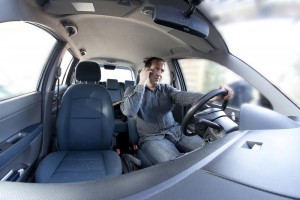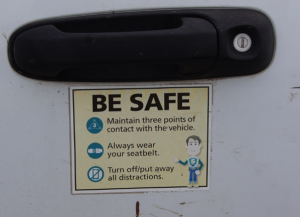 In 1983 only 13 percent of the public regularly used seat belts. Advertising and education campaigns were undertaken and 26 years later, that number increased to approximately 85 percent. That’s more than 25 years to make a usage change of 72 percent. In the meantime, people were injured and died.
In 1983 only 13 percent of the public regularly used seat belts. Advertising and education campaigns were undertaken and 26 years later, that number increased to approximately 85 percent. That’s more than 25 years to make a usage change of 72 percent. In the meantime, people were injured and died.
If we continue the same path and rely upon changing human behavior through campaigns for distracted driving, we can expect the same results, a long wait for a significant change. In the meantime, more than nine people a day will continue to die due to distracted driving, a number that increased from eight just two years ago. Or, society can demand, politicians can legislate, and automakers can undertake using system safety design.
Technology has existed since the early 2000s that will block cell phone signals from the driver’s seat area of vehicles. If installed in vehicles, it could greatly reduce the risks from distracted technology usage in vehicles.
Some might argue that hands free technology is enough if drivers utilize it, but it’s not. It still leads to inattention blindness, drivers missing important items such as stop signs and pedestrians. The human brain cannot process all the information coming into it when attempting to multitask. It has four attention capabilities:
- Sustained attention: ability to concentrate on an activity for a prolonged period without being distracted (e.g., reading a book)
- Selective attention: ability to select from various factors or stimuli and focus on only one (e.g., talking to one person at a noisy party)
- Alternating attention: ability to shift between tasks and cognitive areas of the brain (e.g., reading a recipe and then following the instructions)
- Divided attention: attempting to process two or more demands at the same time require the use of the same cognitive areas of the brain (e.g., on the phone and driving)
Divided attention is what happens when humans attempt to multi task. It creates inattention blindness leading to injury and death for many. Yet, according to AAA:
- 2 in 3 drivers talk on their cell phones while driving
- 1 in 3 drivers admit to typing and sending a text while driving
- 2 in 5 drivers admit to reading a text or email while driving
Sixty-seven percent of those surveyed by the National Safety Council felt at risk because of other drivers’ distractions due to technology. But, back to human behavior, only 25 percent of those same people said their own technology use put others at risk.
Just because we’ve done something one way before doesn’t mean we always have to do it that way. This time it’s time to change our reliance on changing human behavior. Instead, let’s rely on system safety design.
Listen in as Kevin King talks more about distracted driving and system safety design.
Want to hear more talks from Peter and Kevin King? Tune into WCIS 1010 AM Columbus, IN the first and third Friday of every month for People’s Law Talk.
Learn more about distracted technology from us and other great sources.
From the Law Dogs:
Trusted Resources:

 Distracted driving due to technology is a real threat. As drivers we recognize the hazards yet we continue to ignore what we know.
Distracted driving due to technology is a real threat. As drivers we recognize the hazards yet we continue to ignore what we know. What would you say if someone told you there could be zero traffic deaths each year? It might sound like a pipe dream, but it’s not. Many safety advocates are saying it is possible to eliminate most of the 30,000 plus annual highway fatalities in the US.
What would you say if someone told you there could be zero traffic deaths each year? It might sound like a pipe dream, but it’s not. Many safety advocates are saying it is possible to eliminate most of the 30,000 plus annual highway fatalities in the US.

